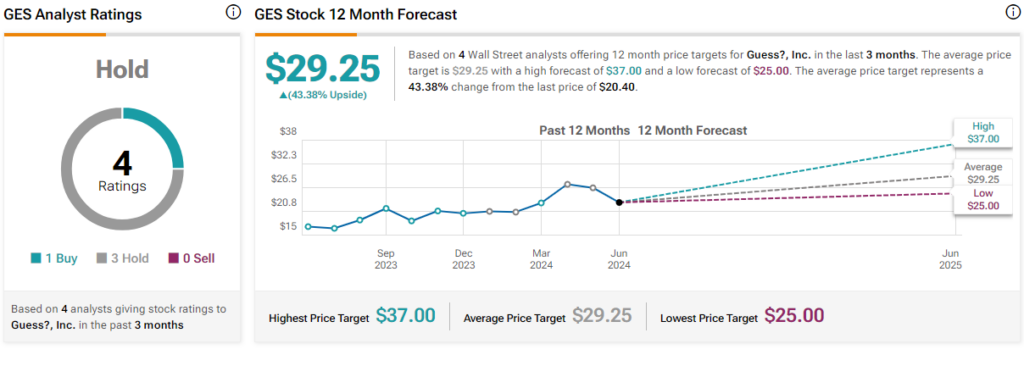Guess what? (NYSE:GES): A disgraced contrarian value play

Given the uncertainty surrounding US consumer spending and mixed retail performance, Guess? (NYSE: GES), an unpopular and heavily shorted apparel stock, represents a unique contrarian value play investment proposition. The company beat expectations on revenue and earnings last quarter, and a repeat of that performance in the next earnings report could drive the share price higher, potentially triggering a “short squeeze” rally for the stock. This event causes a sudden increase in the price of an asset, forcing traders who previously “shorted” the shares to unwind their position.
In addition, strategic moves such as the recent acquisition of retailer Rag & Bone could position the company to capitalize on longer-term growth opportunities. Shares currently trade at a significant discount to industry peers and appear to be a potential value bet for investors looking for an opportunity in the retail market.

Expansion of the GES portfolio
Guess? is a major player in global apparel retail, operating in over 100 countries and generating annual sales of over $2.5 billion. GES has undergone a profound transformation in recent years, successfully entering the affordable luxury market and improving its profit margins as a result.
The company recently expanded its portfolio by acquiring New York-based fashion brand Rag & Bone. The transaction, completed with global brand management firm WHP Global, means that Guess? will fully acquire all of Rag & Bone’s operating assets while also entering into a joint venture with WHP Global to secure Rag & Bone’s intellectual property rights.
GES’s latest financial results and outlook
In the first quarter of 2025, Guess? reported better results than analysts had predicted. Revenue for the quarter was $591.94 million, up 4% year over year, beating the expected revenue of $574.64. The company’s earnings per share (EPS) was -$0.27, beating analysts’ estimate of -$0.40.
The Board of Directors has approved a quarterly cash dividend of $0.30 per share, representing a dividend yield of 5.16%, which will be paid to shareholders on June 28, 2024.
Management has provided forward guidance, anticipating revenue growth of 10.7 to 12.7 percent for the full fiscal year 2025. GAAP and adjusted operating margins are expected to be between 7.3 and 8.1 percent and 7.7 and 8.5 percent, respectively, along with GAAP earnings per share between $2.59 and $2.89 and adjusted earnings per share between $2.62 and $3.00.
What is the price target for GES shares?
Analysts covering the company have taken a cautious stance on the stock. For example, Jefferies analyst Corey Tarlowe, a five-star analyst according to Tipranks ratings, recently cut the price target on the shares from $29 to $25 while maintaining a “hold” rating. He noted that first-quarter results beat expectations but expects the company to continue to face weaker consumer trends.
Guess? is rated “Hold” based on the aggregate recommendations and price targets recently published by four analysts. The average price target for GES shares is $29.25, which represents a potential upside of 43.38% from current levels.
The stock has been in a downtrend since the spring, losing over 31% over the past three months. It is trading at the lower end of its 52-week price range of $15.64 to $30.00 and continues to show negative price momentum. It is trading below its 20-day (21.64) and 50-day (23.05) moving averages. With an RSI of 26.78, it appears to be oversold, including a healthy percentage of outstanding shares (17.5%) held in short interest. However, with a P/E ratio of 6.04 compared to the apparel retail industry average of 25.09, it appears to be trading at high relative value.

Conclusion on GES
Guess? represents an attractive investment opportunity in a volatile retail industry. The company beat financial expectations last quarter, and repeated successes in upcoming reports could fuel share price growth. The company’s projections continue to show promising growth and profitability. Finally, the stock is trading at a deep discount, making it an attractive proposition for contrarian value investors.
Notice



